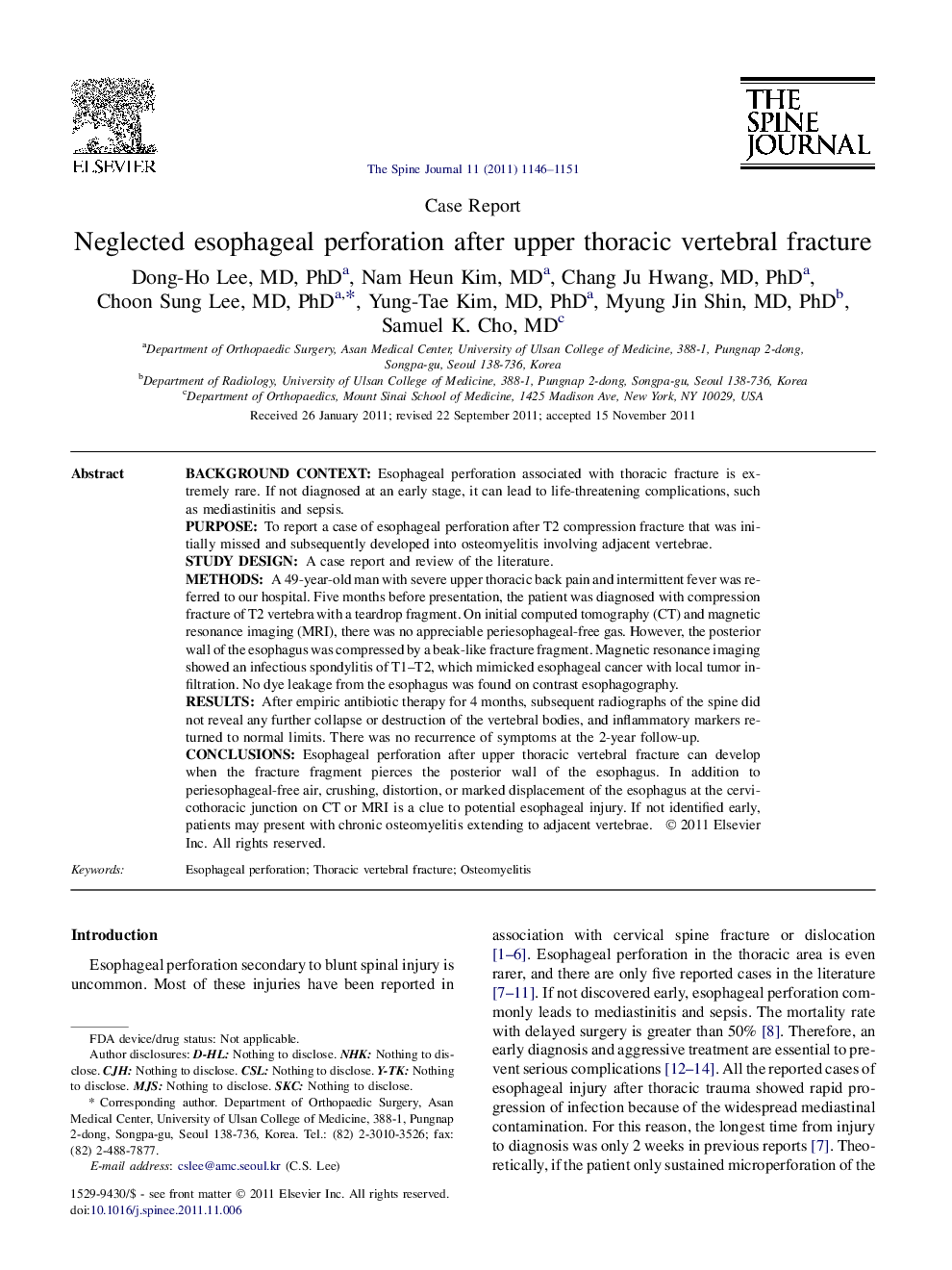| کد مقاله | کد نشریه | سال انتشار | مقاله انگلیسی | نسخه تمام متن |
|---|---|---|---|---|
| 4098707 | 1268622 | 2011 | 6 صفحه PDF | دانلود رایگان |

Background contextEsophageal perforation associated with thoracic fracture is extremely rare. If not diagnosed at an early stage, it can lead to life-threatening complications, such as mediastinitis and sepsis.PurposeTo report a case of esophageal perforation after T2 compression fracture that was initially missed and subsequently developed into osteomyelitis involving adjacent vertebrae.Study designA case report and review of the literature.MethodsA 49-year-old man with severe upper thoracic back pain and intermittent fever was referred to our hospital. Five months before presentation, the patient was diagnosed with compression fracture of T2 vertebra with a teardrop fragment. On initial computed tomography (CT) and magnetic resonance imaging (MRI), there was no appreciable periesophageal-free gas. However, the posterior wall of the esophagus was compressed by a beak-like fracture fragment. Magnetic resonance imaging showed an infectious spondylitis of T1–T2, which mimicked esophageal cancer with local tumor infiltration. No dye leakage from the esophagus was found on contrast esophagography.ResultsAfter empiric antibiotic therapy for 4 months, subsequent radiographs of the spine did not reveal any further collapse or destruction of the vertebral bodies, and inflammatory markers returned to normal limits. There was no recurrence of symptoms at the 2-year follow-up.ConclusionsEsophageal perforation after upper thoracic vertebral fracture can develop when the fracture fragment pierces the posterior wall of the esophagus. In addition to periesophageal-free air, crushing, distortion, or marked displacement of the esophagus at the cervicothoracic junction on CT or MRI is a clue to potential esophageal injury. If not identified early, patients may present with chronic osteomyelitis extending to adjacent vertebrae.
Journal: The Spine Journal - Volume 11, Issue 12, December 2011, Pages 1146–1151